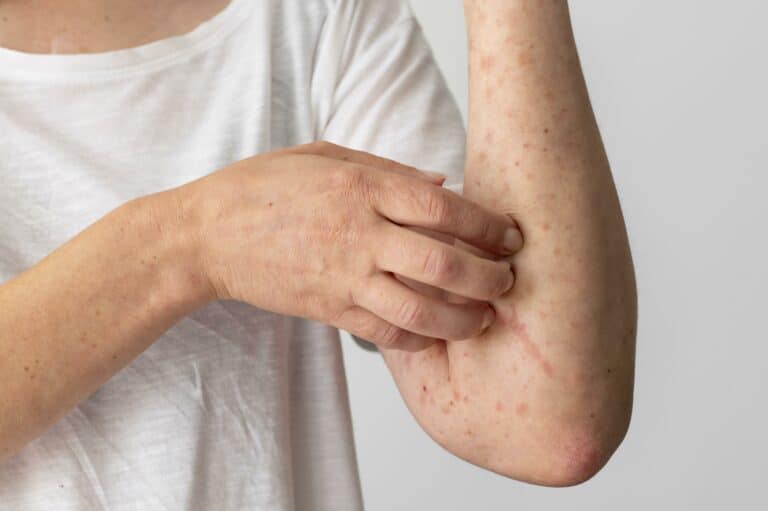Focal Neuropathy
Can medical marijuana help patients who suffer from symptoms related to focal neuropathy? Find out more below.
What is Neuropathy?
Neuropathy happens in your brain due to damage to the peripheral nervous system. One of the sensations associated with neuropathy is frequent burning or tingling pain within the affected areas.
Neuropathy can weaken the nerves so significantly that your body can’t cope with the pain. This neuropathic pain can be hard to deal with but even more difficult to ignore. While peripheral neuropathy can occur across the human body, most people are diagnosed with the fingers and feet first.
What is Focal Neuropathy?
Focal neuropathy is a condition in which you have damage to single nerves, typically in the hand, head, torso, or leg. This type of nerve damage is less common than other types of neuropathy. Many focal neuropathies can affect people with diabetes.
Causes & Symptoms
High blood glucose and high levels of fats in the blood from diabetes can damage the nerves and small blood vessels that nourish the nerves, leading to focal neuropathies.
Symptoms that begin gradually and worsen over time may include the following:
- Carpal tunnel syndrome
- Ulnar entrapment
- Peroneal entrapment
Focal neuropathies that don’t involve trapped nerves cause symptoms that begin suddenly and improve over time and may include pain in the following areas:
- hand
- leg
- foot
- torso
Cranial neuropathies can cause symptoms like:
- aching behind the eye
- double vision
- Bell’s palsy
- Eye focus issues
Diagnosis & Treatment
Doctors typically can diagnose focal neuropathy by asking about medical history and symptoms and performing specific nerve tests. It can be treated with medication, or your doctor may recommend:
- wearing a splint/brace to take pressure off the nerve
- surgery, if other treatments don’t work
Most people recover within a few weeks or months.
Diabetes & Medical Cannabis
Diabetes is a chronic disease when the pancreas no longer makes insulin or the body doesn’t use the insulin it produces. Insulin is a hormone made by the pancreas that allows glucose from our food to pass from the bloodstream into the cells to produce energy. All carbohydrates are broken down into glucose in the blood and then assisted by insulin to travel to blood cells.
The Texas A&M School of Public Health performed a 2022 data analysis study that examined national survey results from over 15,000 people. They found that female cannabis consumers who consumed substantial amounts of cannabis had a lower incidence of diabetes than females with little to no cannabis use.
A 2016 trial in Diabetes Care found that THCv could present a new therapeutic option for glycemic control in people with type 2 diabetes.
The authors noted that using THCV significantly impacts fasting blood glucose levels and improves pancreatic function.
A 2013 study of around five-thousand adults found that marijuana use was associated with lower fasting insulin levels, insulin resistance, and smaller waist circumference. Cannabis use acts through the direct and indirect stimulation of cannabinoid receptors in the endocannabinoid system. This cell-signaling system modulates the body’s central nervous system and helps maintain homeostasis.
Researchers have also found that CBD lowers resistin levels and increases gastric inhibitory polypeptide that triggers insulin production. Since CBD possesses anti-inflammatory properties may be a vital protective tool for diabetes patients.
History of Peripheral Neuropathy
The peripheral nervous system is a network of nerves that connects the central nervous system in the brain and spine to the rest of the body. This system controls our sense of touch, blood pressure regulation, digestion, heart rate control, and even breathing.
In people with diabetes mellitus, neuropathy is more common. However, 8.8% of non-insulin-dependent diabetes patients are diagnosed with clinical neuropathy. If a patient stays in a diabetic condition for more than 20 years, their mortality rate is expected to rise.
An estimated six to 51 percent of adults with diabetes show peripheral neuropathy. These results include patients of different ages, durations of diabetes, glucose control, and type 1/ type 2. Their neuropathic symptoms range from asymptomatic mild to severe pain.
Symptoms of Peripheral Neuropathy
It usually starts with pain, numbness, and tingling fingers. Depending on the severity of this illness, your hands or feet may be significantly affected. Some neuropathic pain symptoms can be severe, while others can be mild. Some come slowly over a long time, and some appear suddenly without warning. Peripheral neuropathy occurs primarily in the sensory, motor, and autonomous nerves.
Patients suffering from peripheral neuropathy often describe a burning sensation and stifling and tingling symptoms. Sometimes, marijuana can improve symptoms in patients with treatable conditions; however, conditions often worsen over time. Peripheral neuropathy is usually diagnosed with long-term diabetes and can have other causes, including infection and injuries.
Can Marijuana Help Relieve Pain?
Medical marijuana is commonly found to possess significant anti-inflammatory and antioxidant properties, which can help with chronic pain management reasonably quickly. Cannabinoid receptors bind to the brain and peripheral nerve cells and help regulate how you see and feel the pain to reduce symptoms.
Medical cannabis, therefore, as opposed to other drugs, appears to be an excellent alternative to treat focal neuropathy patients and manage pain due to nerve damage.
Best Cannabis Strains for Focal Neuropathy
When it comes to the best medical marijuana strains to cure neuropathic pain, you need something to treat more severe pain and other symptoms related to focal neuropathy. Fortunately, many strains work extraordinarily to relieve muscle spasms, swelling, and tension.
Conclusion
Discovering a way to cope with focal neuropathy symptoms can be difficult. It’s not easy finding conventional medications that are effective or that our bodies respond to correctly. Many prescription drugs have side effects, so marijuana can be a life-changing alternative for some peripheral and focal neuropathy patients.
Remember, marijuana doesn’t cure neuropathy but instead helps manage nerve pain. Discuss medical cannabis use with your physician and follow their advice according to your focal neuropathy treatment plan. We recommend visiting the local dispensary for those who have cleared it with your doctor; you may find the relief you need.
Last Updated: June 14, 2024
Get Your Medical Card
Connect with a licensed physician online in minutes
Table of Contents
Keep Reading
-
Exploring The Connection Between Cannabis And Insomnia
Learn how cannabis can improve your sleep quality by exploring the connection between cannabis and insomnia in this informative article. Click now to discover the benefits of using cannabis for better sleep!
-
Exploring THC Vs CBD For Relaxation Effectiveness
Looking for the ultimate relaxation? Discover if THC or CBD is the key. Uncover which compound delivers unrivaled calmness and serenity. Click now to find your perfect chill!
-
Can You Be Allergic to Marijuana?
Can You Be Allergic to Marijuana? Many people are curious about whether or not they can be allergic to marijuana.



